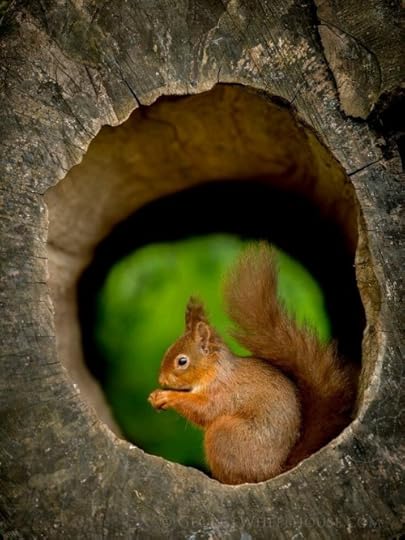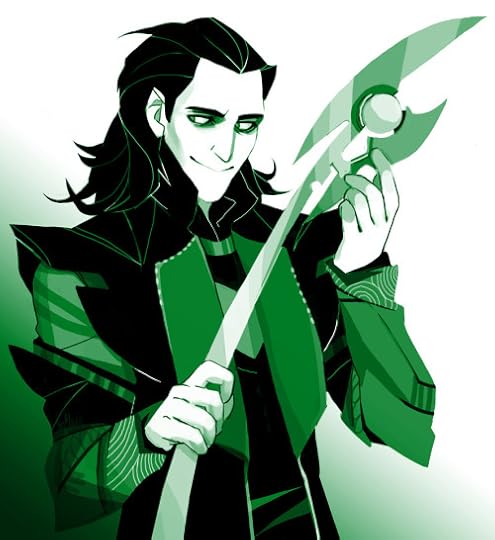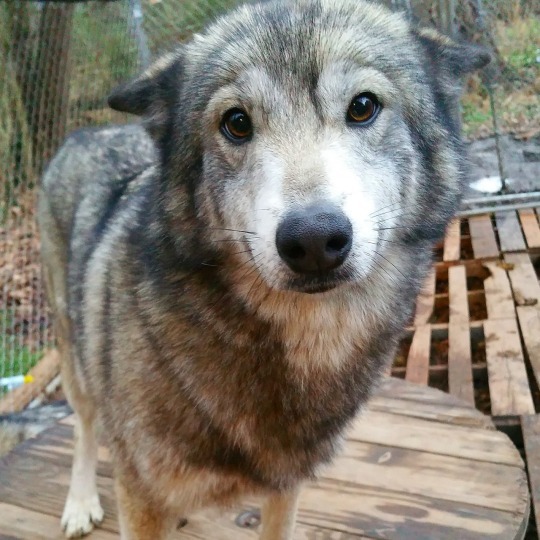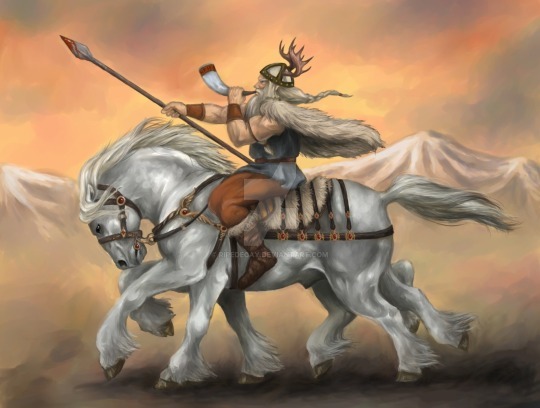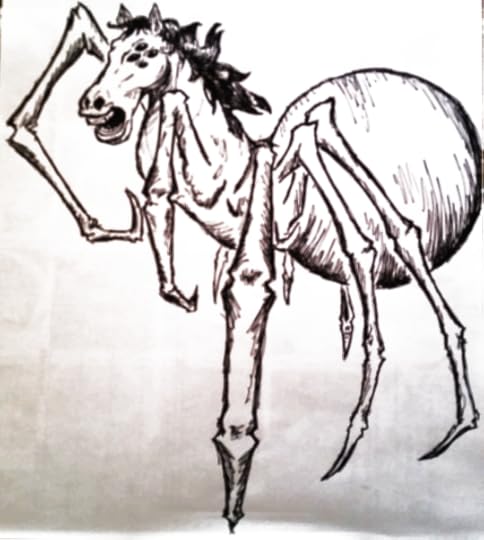C. Gockel's Blog, page 9
September 10, 2017
In Which Diversity Isn't a Myth
Ok. I’m tired of the typical vampire, werewolf and fairy.I’m also tired of the occidental-centrism in mythology. Hence, this list.
I tried to included as many cultural variants as I could find and think of. (Unfortunately, I was restricted by language. Some Russian creatures looked very interesting but I don’t speak Russian…) Please, add creatures from your culture when reblogging (if not already present). It took me a while to gather all those sites but I know it could be more expansive. I intend on periodically editing this list.
Of note: I did not include specific legendary creatures (Merlin, Pegasus, etc), gods/goddesses/deities and heroes.
DragonsThe Ancient Dragon (Egypt, Babylon and Sumer)
Of the Cockatrice (creature with the body of a dragon)
Alphabetical List of Dragons Across Myths (Great way to start)
Little creatures (without wings)The Legend of the Leprechauns, The Leprechaun
Chanaque /Alux (the equivalent of leprechauns in Aztec/Mayan folklore)
Elves in Mythology and Fantasy
Kabeiroi or Cabeiri (Dwarf-like minor gods in Greek mythology)
The Myth of Loki and the Dwarves
Creatures with wings (except dragons)Fairies in Old French Mythology
Bendith Y Mamau (Welsh fairies)
Peri (Persian fairies)
Yü Nü (Chinese fairies)
Garuda (Bird-like creature in Hindu and Buddhist myths)
Bean Nighe (a Scottish fairy; the equivalent of a banshee in Celtic mythology)
Spirited CreaturesJinn (Genies in Arabic folklore)
Aisha Qandisha and Djinn in Moroccan Folklore
Oni (demons in Japanese folklore)
Boggarts: The British Poltergeist
Demons in Babylonian and Assyrian Mythology (list)
Demons in the Americas (list)
European Demons (list)
Middle-East and Asia Demons (list)
Judeo-Christian Demons (list)
Mahaha (a demon in Inuit mythology)
Flying Head (a demon in Iroquois mythology)
GhostsToyol (a dead baby ghost in Malay folklore)
Yuki-onna (a ghost in Japanese folklore)
The Pontianak (a ghost in Malay mythology)
Funayurei (a ghost in Japanese folklore)
Zagaz (ghosts in Moroccan folklore)
Horse-like mythical creaturesThe Kelpie (Could have also fitted in the sea creatures category)
Hippocamps (sea horses in Greek mythology)
Horse-like creatures (a list)
Karkadann, more on the Karkadann (a persian unicorn)
Ceffyl Dwfr (fairy-like water horse creatures in Cymric mythology)
Undead creaturesAsanbosam and Sasabonsam (Vampires from West Africa)
The Aswang: The Filipino Vampire
Folklore Vampires Versus Literary Vampires
Callicantzaros: The Greek Vampire
Loogaroo/Socouyant: The Haitian Vampire
Incubi and Sucubi Across Cultures
Varacolaci: The Romanian Vampire
Brahmaparusha: The Indian Vampire
The Ghoul in Middle East Mythology
The Medical Truth Behind the Vampire Myths
Shape-shifters and half-human creatures (except mermaids)Satyrs (half-man, half-goat)
Sirens in Greek Mythology (half-woman and half-bird creatures)
The Original Werewolf in Greek Mythology
Werewolf Syndrome: A Medical Explanation to the Myth
The Kumiho (half fox and half woman creatures)
Scorpion Men (warriors from Babylonian mythology)
Domovoi (a shape-shifter in Russian folklore)
Aatxe (Basque mythology; red bull that can shift in a human)
Yech (Native American folklore)
Ijiraat (shapeshifters in Inuit mythology)
Sea creaturesThe Kraken (a sea monster)
Nuckelavee (a Scottish elf who mainly lives in the sea)
Lamiak (sea nymphs in Basque mythology)
Bunyip (sea monster in Aboriginal mythology)
Apkallu/abgal (Sumerian mermen)
An assemblage of myths and legends on water and water creatures
The Encantado (water spirits in Ancient Amazon River mythology)
Zin (water spirit in Nigerian folklore)
Qallupilluk (sea creatures in Inuit mythology)
Monsters That Don’t Fit in Any Other CategoryAigamuxa, more details on Aigamuxa
Myrmidons (ant warriors)
Giants: The Mystery and the Myth (50 min long documentary)
Inupasugjuk (giants in Inuit mythology)
Fomorians (an Irish divine race of giants)
The Manticore, The Manticore and The Leucrouta
The Orthus (two-headed serpent-tailed dog)
Rakshasa (humanoids in Hindu and Buddhist mythology)
Yakshas (warriors in Hindu mythology)
Taqriaqsuit (“Shadow people” in Inuit mythology)
References on Folklore and Mythology Across the GlobeAn Overview of Persian Folklore
List of Medieval and Ancient Monsters
Native American Animals of Myth and Legends
Bestiary of Ancient Greek Mythology
Mythology, Legend, Folklore and Ghosts
Ghosts Around the World, Ghosts From A to Z
Strange (Fantastic) Animals of Ancient Egypt
On the Legendary Creatures of Africa
References on writing a myth or mythical creaturesWriting a MYTHology in your novel?
10 Steps to Creating Realistic Fantasy Creatures
Creating Fantasy Creatures or Alien Species
Book Recommendations With Underrated Mythical Creatures
(I have stumbled upon web sites that believed some of these mythical creatures exist today… Especially dragons, in fact. I just had to share the love and scepticism.)
good
Ref
September 7, 2017
cgockel:
lokislonelylady:
cgockel:
her-pegship:
ibringthefireo...
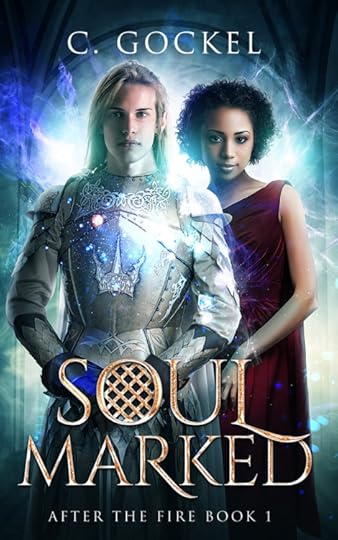
Magic is real, but Tara’s life isn’t a fairy tale.
From humble beginnings, Tara’s managed to work her way into a great job researching Dark Energy, aka “magic,” in Chicago. She has a beautiful house she renovated with her own hands, and a loving extended family, but she hasn’t found her soulmate … Not that she believes in soulmates.
Lionel is a Light Elf. Despite being of dubious heritage and being born a peasant, he’s risen in the ranks to serve the Elf Queen. Like all true elves, Lionel has a soulmark to identify his soulmate … He just hasn’t found her yet.
When Lionel’s and Tara’s lives collide and Dark Elves strike, they’re forced to work together or perish. Friendship and more grows between them, but dangers loom … Tara is more important than she knows, and Lionel is more important than he wants to admit. Both of them have choices to make.
Will Lionel choose a “perfect” love over Tara? How much is Tara willing to give up for a happily ever after?
They might find that in an uncertain world, the love you struggle for is the only certain thing.
Coming soon! A standalone novel in a new series in the I Bring the Fire universe. :-)
The cover is so pretty I’m having trouble writing … I keep opening it up and smiling.
Ooh, new stuff from @cgockel!
Thank you for the reblog. It will be released September 18th, and is only on preorder right now.
This book is awesome people, preorder it! All her books are the best, she is my favorite writer, I Bring the Fire is the best series about Loki ever written Marvel or mythology and this happens in the same world during the time of that series to new characters. A great story!
Awww … thank you so much for saying so. The betas did love it! It’s in final edits now and I’m very excited!
Just a few more days until it’s released! So nervous …
September 5, 2017
quarkmaster:
Mermaid
The low tide revealed something strange....
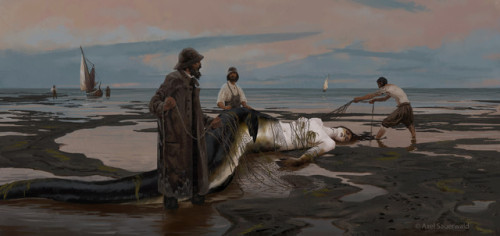

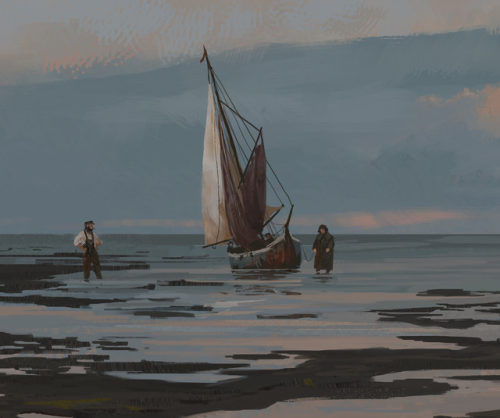
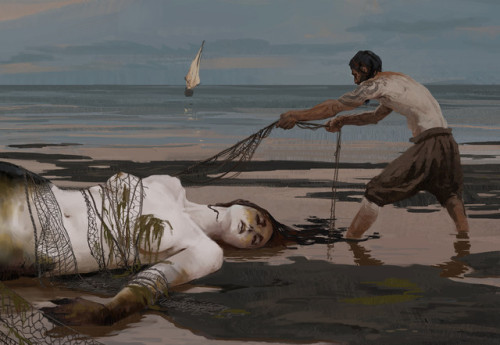
Mermaid
The low tide revealed something strange. Something the fishermen had never seen before. Something that should not be there, something that was not from this world. Something dangerous but beautiful.
September 3, 2017
aqua-isabelle:plus.google.com
Ratatoskr looking deceptively...
August 25, 2017
deliciousmuchentuchen:
Loki ;____;
STOP WHAT YOU’RE DOING
August 24, 2017
Magic is real, but Tara’s life isn’t a fairy tale.From humble...

Magic is real, but Tara’s life isn’t a fairy tale.
From humble beginnings, Tara’s managed to work her way into a great job researching Dark Energy, aka “magic,” in Chicago. She has a beautiful house she renovated with her own hands, and a loving extended family, but she hasn’t found her soulmate … Not that she believes in soulmates.
Lionel is a Light Elf. Despite being of dubious heritage and being born a peasant, he’s risen in the ranks to serve the Elf Queen. Like all true elves, Lionel has a soulmark to identify his soulmate … He just hasn’t found her yet.
When Lionel’s and Tara’s lives collide and Dark Elves strike, they’re forced to work together or perish. Friendship and more grows between them, but dangers loom … Tara is more important than she knows, and Lionel is more important than he wants to admit. Both of them have choices to make.
Will Lionel choose a “perfect” love over Tara? How much is Tara willing to give up for a happily ever after?
They might find that in an uncertain world, the love you struggle for is the only certain thing.
Coming soon! A standalone novel in a new series in the I Bring the Fire universe. :-)
The cover is so pretty I’m having trouble writing … I keep opening it up and smiling.
When You Try to Fight Omens With Technology
August 23, 2017
inonibird:Eclipse
Mythic
Sleipnir doesn’t make sense
wakeupontheprongssideofthebed:
One thing I never really understood was Sleipnir (meaning “slippery one” fyi) in depictions of Norse mythology. Sleipnir is an eight-legged horse, the steed of Odin and the son of Loki, and he is commonly depicted like this:
(image not mine)
But why would you depict an eight-legged horse like this? Horses gallop the same way most other mammals run, with all feet leaving the ground at one point, so having extra feet here doesn’t seem like it could make the horse any faster. I’m also not sure it would give it any more stable footing, since it doesn’t have a wider base.
If you want a stable eight-legged form that can reach great speeds for its size, wouldn’t you want to start with what nature has already provided? Wouldn’t you want something more like… this?
(my drawing)
“But wait!” you might say, “Sleipnir was conceived when Loki, in horse-form, seduced another horse! That’s why it looks all horsey, just with extra bits!”
Well, that’s a good point, but consider that Loki as a deity was originally based off the spider, and his name even derives from the old Swedish word for spider (source). Therefore, it’s not too hard to believe Sleipnir inherited his horse half from his mother and the more spidery half from his father. In conclusion:
Spider-Horse,
Spider-Horse,
He does spider-things of course!
Weaves a web,
Makes you gawk,
Riding round ‘til Ragnarok!
Look out! Here comes the Spider-Horse.
I am all for creative interpretations of Sleipnir. And spiders, obviously. This is epic.
But just so you know, that journal is from the 60′s, and the current scholarly consensus no longer considers the spider etymology to be likely. We still aren’t sure where the name comes from, and probably won’t ever be, but I’ve seen quite a few more recent academics lean toward Old Norse luka, meaning “close”, “shut”, or “end.” (See Simek’s Dictionary of Northern Mythology.)
^^^^ my research found much the same. (which is sad, i like spiders)
As far as Sleipnir having eight legs, it’s probably a reference to Icelandic horses. Icelandic horses are one of the few horse breeds with five gaits. They can do a walk, trot and canter/gallop, like most horses. But they have also evolved to have a tolt,
[ gif of a man riding a brown Icelandic horse doing a tolt. The back legs of the horse move rather stiffly back and forth, while the front legs are lifted up almost to the horse’s chest. While the horse bounces slightly, the man riding the horse could probably hold a glass of water without spilling. ]
which is fast, smooth and noted for its explosive speed and ability to cover long distances.
The second unique gait is called flugskeið, or flying pace.
[ a light brown Icelandic horse demonstrating the flugskeið. With the exception of the wind in the horses’ mane, the upper part of the horse and the rider seem to almost be still, with the background simply zipping by them. The horse’s legs, however, move fast enough to blur. Unlike with a full gallop, the horse does not fully extend its legs away from its body. This is particularly obvious in the front legs of the horse, which lift up to the chest of the horse and land under its chin the same way as in the tolt]
It is both smooth and fast, some horses being able to reach speeds of 30 mph. Not all Icelandic horses can do a flugskeið, but you’ll notice that when done properly the legs move in unison and so fast they can blur, giving the illusion of the horse having eight legs.
Anyways, here is a video to further emphasize how cool the flugskeið is;
I’d never heard this theory! That’s so neat.
The one I’ve read attributed the eight legs thing to a metaphor of a coffin + 4 pallbearers.
This is FASCINATING, and I adore Sleipnir!

